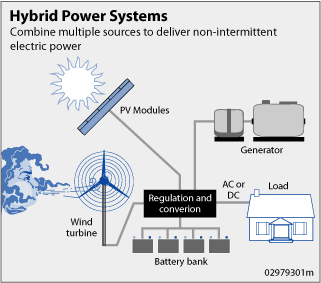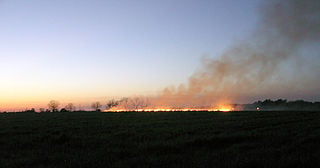“The science is clear: breathing polluted air increases the risk of debilitating and deadly diseases such as lung cancer, stroke, heart disease, and chronic bronchitis. Air pollution is now the world’s fourth-leading fatal health risk, causing one in ten deaths in 2013.”1
Air in California, America’s 31st state, is under repetitious attack via a hail of pollutants from many sources in many regions. In the area of greenhouse-gas-emissions (GHGs) contribution, meanwhile, according to the California Environmental Protection Agency Air Resources Board (ARB), California’s contribution worldwide is roughly two percent. Even though not a country, California as a state, nonetheless, is considered the world’s 15th largest emitter of GHGs.2
Expressed in million metric tons of carbon dioxide equivalent units (MMTCO2E) released into the atmosphere yearly, California’s annual GHG emissions output is approximately 441.5 MMTCO2E. Forward progress in this area in terms of GHGs reduction has been made. However, work must be ongoing. Further, a 2020 GHG-emissions-reduction goal of 427 MMTCO2E has been set. 3 “California’s Greenhouse Gas Emissions Inventory,” meanwhile, is one source where more information can be found.
A ‘model’ model
So, for the various stationary sources (e.g. energy and heat production; landfills; buildings; forests; and water delivery) of air pollution, what are some of the kinds of active programs within the stationary sources sector that the Golden State is currently participating in to reduce emissions?
Energy –
Energy efficiency programs: California Long Term Energy Efficiency Strategic Plan, September 2008, a California Public Utilities Commission document. This plan seeks to reduce electricity and natural gas waste by maximizing the efficiency of such in ways that are cost-effective starting in year 2009 and extending to year 2020 and beyond. For water heating, there is the Solar Hot Water and Efficiency Act of 2007, a 10-year, $250 million incentive program with the goal of installing 200,000 solar hot water heating systems in state by 2017.4 And with respect to cogeneration (electricity and heat generation combined), there is the Combined Heat and Power (CHP) program.5

The Million Solar Roofs program: An initiative that is proof positive that further solidified is California’s commitment to GHG-reduction. In the crosshairs is a total of 3,000 megawatts of capacity installed by 2020.
To learn more, here are three additional resources:
“The Future is California – How the State is Charting a Path Forward on Clean Energy,” by Jayant Kairam of the Environmental Defense Fund at its Energy Exchange blog,
“On the clean-air, clean-energy cutting edge: Practices, programs in Calif. getting results”
Cap and Trade –
For those who do not know what cap and trade entails, on the “How Cap and Trade Works” page of the Web site of the Environmental Defense Fund (EDF), the market mechanism is explained. What the EDF states, is: “Cap and trade is a powerful approach to reduce pollution in our atmosphere.”
From the same page it is further stressed, “The cap on greenhouse gas emissions is a limit backed by science. Companies pay penalties if they exceed the cap, which gets stricter over time.
“The trade part is a market for companies to buy and sell allowances that permit them to emit a certain amount. Trading gives companies a strong incentive to save money by cutting emissions.”8
The EDF also emphasized that since California’s cap and trade program became effective in 2013, as a result of this program going into effect, in the period of time since its launch until 2015, in that two-year timeframe, emissions dropped four percent.9
“Carbon Market California: A Comprehensive Analysis of the Golden State’s Cap-and-Trade Program – Year Two: 2014,” http://www.edf.org/sites/default/files/content/carbon-market-california-year_two.pdf an EDF study by Katherine Hsia-Kiung and Erica Morehouse, offers some additional insights.
A few excerpts:
As explained in the report’s Executive summary, “… [T]he end of 2014 officially marked the conclusion of ‘Compliance Period One,’ the first phase of the market program established by the California Air Resources Board (CARB).”10
Program progress (Chap. 2), “Cap-and-trade auction proceed investments” on p. 18, “California has held nine quarterly allowance auctions to date, raising a total of $969.1 million for the Greenhouse Gas Reduction Fund (GGRF). … Revenue collected from the auctions is either returned to electricity customers as a climate credit or reinvested in the economy through the GGRF.”11
“Earlier in 2014, the Legislature amended the 2013-2014 budget to include … $40 million for water efficiency projects, bringing the total amount of appropriated cap-and-trade funds to $902 million.”12

To learn more, visit: California Environmental Protection Agency Air Resources Board’s “Cap-and-Trade Program” Web page here.
Green Buildings –

To learn more about Building Energy Efficiency Standards, see: http://www.energy.ca.gov/title24
To learn more about LEED (Leadership in Energy and Environmental Design)-certified, building practices, visit the U.S. Green Building Council Web site here.
Agriculture –
“Agricultural burning is currently a significant source of air pollution in the San Joaquin Valley, responsible for more than ten tons per day of particulates and more than 15 tons per day of smog forming chemicals,” the SJVAPCD noted. (Reference: “Garbage disposal: Rubbish not just for burning and dumping anymore”).

From the article “Agricultural burn phase-out begins,” published in the July 2005 issue of the San Joaquin Valley Air Pollution Control District’s “Valley Air News” publication, written is:
“SB 705 was enacted in 2003 and bans open [-field ag-waste] burning in three phases:
- June 1, 2005: Field crops, most pruning and weed abatement;
- June 1, 2007: Orchard Removals;
- June 1, 2010: Pruning from crops harvested off the ground, vineyard removal and removal of diseased materials.”
Then there are facets like the application of such things as farmland conservation; replacement and upgrade programs for farming equipment, pumps and electricity generation and cold storage facilities; composting; and water and waste treatment (conversion of into energy, electricity and heat or steam) programs.
Above and beyond
There is so much being done at the individual, corporate and industrial levels to reduce emissions of greenhouse gases in state, initiatives in Recycling and Waste (54 percent landfill-waste diversion rate through recyclable materials recovery,16 composting,17 landfill-methane capture,18 recyclables replacing virgin raw materials,19 in-vessel anaerobic digestion20), passed legislation in the forms of SB 375 (California Senate Bill 375 otherwise known as The Sustainable Communities and Climate Protection Act of 2008) and AB 32 (California Assembly Bill 32, also known as the Global Warming Solutions Act of 2006) and others, have been covered in far greater detail on the pages of the Air Quality Matters blog.
Beyond these, not to be overlooked are:
Sustainable Forests –
Sustainable forest biomass for energy generation; preserve forest sequestration – reduce wildfire risk; avoid changes in land use to effect a reduction in carbon storage. Urban forest projects, meanwhile, have a dual benefit – carbon sequestration and shading to reduce the need for air conditioning.21
Water Conditioning, Delivery –
For water delivery and water conditioning, there is the application and use of more renewable sources of energy.22
Next10 Study –
“The Economic Impacts of California’s Major Climate Programs on the San Joaquin Valley.” From the press release: “1st comprehensive cost/benefit study of climate policies in San Joaquin Valley finds over $13 billion in economic benefits, mostly in renewable energy;” the study is available via Next10.
Mattress recycling –
To learn more about Blue Marble Materials (mattress recycling program), visit: https://www.bluemarblematerials.com
To read “In 2017, do as California is: Make air cleanup, job one – Part 1,” go here.
Meanwhile, Part 3 to highlight emissions reduction from the mobile-sources sector.
Notes
- World Bank and Institute for Health Metrics and Evaluation. 2016. The Cost of Air Pollution: Strengthening the Economic Case for Action. Washington, DC: World Bank. License: Creative Commons Attribution CC BY 3.0 IGO http://documents.worldbank.org/curated/en/781521473177013155/pdf/108141-REVISED-Cost-of-PollutionWebCORRECTEDfile.pdf
- “Climate Change Scoping Plan: a framework for change,” (prepared by the California Air Resources Board for the State of California), Introduction: A Framework for Change, “C. California’s Greenhouse Gas Emissions and the 2020 Target,” Dec. 2008, p. 11
- Ibid, p. 12
- Ibid, Recommended Actions, “C. Emissions Reduction Measures, 3. Energy Efficiency, (Solar Water Heating),” p. 43
- Ibid, Recommended Actions, “C. Emissions Reduction Measures, 3. Energy Efficiency, (Combined Heat and Power),” pp. 43-44
- Ibid, Recommended Actions, “C. Emissions Reduction Measures, 4. Renewables Portfolio Standard,” p. 44
- Ibid, p. 45
- Copyright © 2017 Environmental Defense Fund. Used by permission. “How Cap and Trade Works: The system reduces emissions by setting a limit on pollution and creating a market,” Environmental Defense Fund, https://www.edf.org/climate/how-cap-and-trade-works
- Ibid, “Cap and trade is lowering emissions globally”
- Copyright © 2017 Environmental Defense Fund. Used by permission. “Carbon Market California: A Comprehensive Analysis of the Golden State’s Cap-and-Trade Program – Year Two: 2014,” an EDF study by Katherine Hsia-Kiung and Erica Morehouse, Executive summary, p. 2 http://www.edf.org/sites/default/files/content/carbon-market-california-year_two.pdf
- Ibid, “Cap-and-trade auction proceed investments,” Chap. 2 Program progress, p. 18
- Ibid, p. 20
- Ibid, “Figure 2-5 Greenhouse gas reduction fund,” p. 21
- “California Energy Commission – Tracking Progress,” Advancing Energy Efficiency of Existing Buildings, “Energy Efficiency,” p. 3, http://www.energy.ca.gov/renewables/tracking_progress/documents/energy_efficiency.pdf
- Ibid, Zero-Net-Energy Goal for New Buildings, “Energy Efficiency,” p. 5, http://www.energy.ca.gov/renewables/tracking_progress/documents/energy_efficiency.pdf
- “Climate Change Scoping Plan: a framework for change,” (prepared by the California Air Resources Board for the State of California), Recommended Actions “C. Emissions Reduction Measures, 15. Recycling and Waste,” Dec. 2008, p. 62
- Ibid, Recommended Actions “C. Emissions Reduction Measures, 15. Recycling and Waste,” p. 62
- Ibid, Recommended Actions “C. Emissions Reduction Measures, 15. Recycling and Waste, (Reduction in Landfill Methane),” p. 62
- Ibid, Recommended Actions “C. Emissions Reduction Measures, 15. Recycling and Waste, (High Recycling / Zero Waste),” pp. 62-63
- Ibid, Recommended Actions “C. Emissions Reduction Measures, 15. Recycling and Waste, (High Recycling / Zero Waste),” pp. 62
- Ibid, Recommended Actions “C. Emissions Reduction Measures, 16. Sustainable Forests,” pp. 64-65
- Ibid, Recommended Actions “C. Emissions Reduction Measures, 17. Water,” pp. 65-66
Top image above: U.S. Department of Energy
Second image from top: Ashley Felton
Third image from top: Courtesy of Lynne Biddinger, San Luis Obispo Chamber of Commerce
This post was last revised on Nov. 24, 2020 at 3:19 p.m. Pacific Standard Time.
Published by Alan Kandel